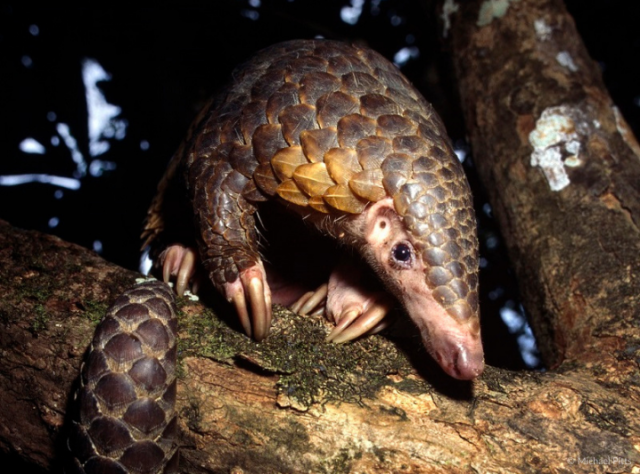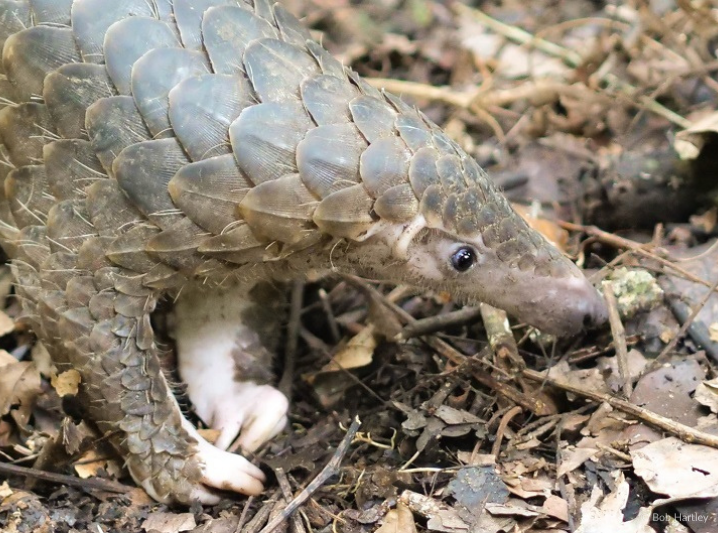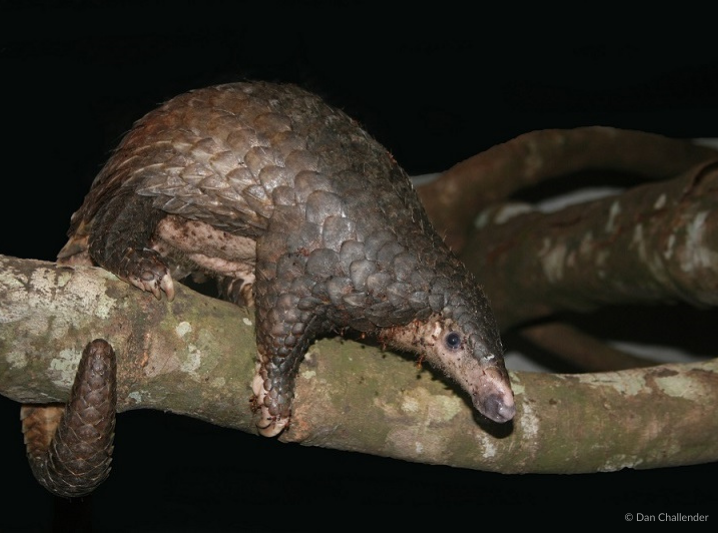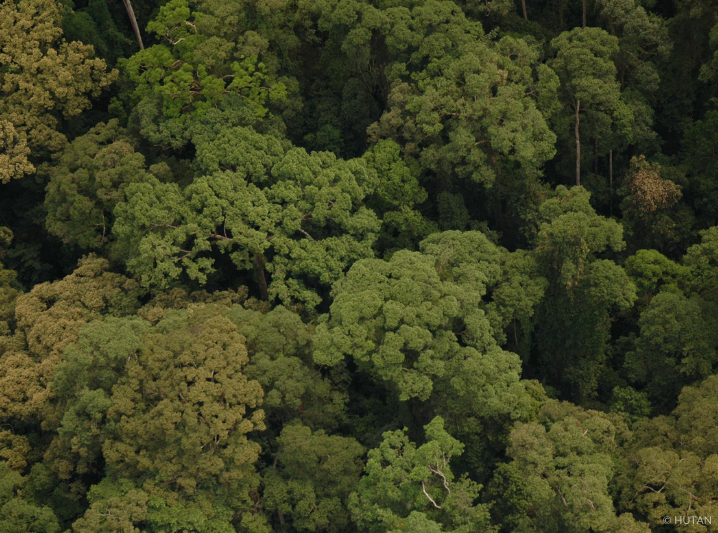
Donations to WLT’s new appeal will help safeguard a species under serious threat. Populations of Sunda Pangolin in Malaysian Borneo are Critically Endangered and in need of your help. Image Credit: Michael Pitts.
Today we are delving into the mysterious lives of the elusive Sunda Pangolin, keratin-covered climbers that are one of the most trafficked animals in the world. This year, World Land Trust (WLT) supporters have a chance to provide a better future for these Critically Endangered mammals – donating to our expanded £300,000 ‘Saving Borneo’s Orangutan Corridors’ appeal so that our partner HUTAN can save pangolin habitat in Malaysian Borneo and keep poachers away.
With their long nose, small forearms and curious demeanour, pangolins are a firm favourite of animal lovers everywhere, and yet very little is known about these nocturnal, shy and elusive insect-eating mammals. Today, we wanted to spread the love for the Sunda Pangolin by sharing a few facts that might have escaped your attention until now – a few reasons why this is an incredible species that we can all make a difference for through WLT’s latest appeal.
1. Sunda Pangolins may have been around for 80 million years

If you’re into all things prehistoric, Sunda Pangolins may be of interest to you! Researchers believe Sunda Pangolins roamed the earth alongside dinosaurs 80 million years ago. Originally, Sunda Pangolins were thought to be a member of the Xenartha family, which includes anteaters, sloths and armadillos, but new research suggests they could be closer to the Carnivora family, which includes hyenas, bears and wolves.
2. They are the only known mammal to be covered in large scales

Of all pangolin facts, there is one that makes them stand out from the rest of the mammal crowd: the armour of keratin – the same protein type that makes up human hair, skin and nails – that covers their skin. When threatened, pangolins curl up into a tight ball, and the sharp edges of the scales are used as a defence against predators. This protective behaviour earned them their name – pengguling in Malay translates to ‘things that roll up’.
3. They can eat up to 20,000 ants in one day

Sunda Pangolins do not have any teeth, so they use their long, sticky tongue – which can reach up to 40cm in length – to catch insects. An individual will eat, on average, 73 million ants and termites every year. Such prodigious appetite makes these insect eaters key to the ecosystems they live in: their diet helps regulate insect populations and aerate the soil while digging for critters.
4. Baby pangolins ride on their mothers’ tails for months after birth

Sunda Pangolins breed all year round, giving birth to one young after a gestation period of six months. Females are dependent on tree hollows and burrows while caring for their ‘pangopup’. For around three to four months, they will carry their young ones on their tail until they can survive on their own.
5. They are more agile than you may think

Don’t let the Sunda Pangolin’s slow, somewhat awkward movements fool you. These mammals are well adapted to an incredible array of terrains and activities. They have large, curved claws to excavate ant and termite nests, pull bark off trees and dig burrows. They are great climbers as their prehensile tails help them clamber up trees – and they can swim too!
6. They are one of the world’s most trafficked animals – but you can help them

The Sunda Pangolin is under serious threat. A combination of extensive hunting for their scales and habitat loss has piled such pressure on this species that they are classified as Critically Endangered by the IUCN. For an elusive species, knowledge gaps have complicated conservation efforts so far, but our latest appeal offers you a chance to give the Sunda Pangolin the very thing it needs in Malaysian Borneo currently: habitat safe from poachers.

